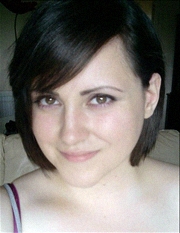Tutor HuntResources Biochemistry Resources
The Process Of Dna Transcription And Translation To Create Proteins.
A concise description of the process undertaken in cells to create proteins.
Date : 24/02/2015
Author Information

Uploaded by : Joanna
Uploaded on : 24/02/2015
Subject : Biochemistry
When a certain function is required in a gene it becomes `switched on` and the weak hydrogen bonds that bind the bases of the double helix strands (one template and one non- template) separate like a zip. Once separated, mRNA uses complimentary bases to transcribe from the sequence of bases on the template strand to form a new segment of mRNA. This new segment is semi-identical to the non-template strand, except it has exchanged the base T for a new base U.
Following transcri ption, tRNA (which consists of anticodons at one end and corresponding amino acids at the other) begins to translate. Ribosomes then aid the tRNA to bind its anticodon bases to the codon bases on the mRNA segment. The start anticodon in the translation sequence (which is always AUG - Methionine) binds to the mRNA, followed by a second anticodon. Then using peptide bonds the 2 adjoined amino acids link together. Once the first peptide bond is made the first tRNA is no longer required and releases, whereupon an ensuing third tRNA anticodon binds with the mRNA. This action of binding, linking and releasing repeats along the mRNA segment until it reaches the stop codon (there are only 3 different types of stop codon).
The resultant linear polypeptide of amino acids interact with each other forging ties, causing it to fold into a particular 3D shape forming a functional protein molecule.
This resource was uploaded by: Joanna
Other articles by this author
- The Norovirus (common sick bug)
- The science of addiction
- Nociceptive pain
- Breast screening importance.
- Examine and assess the role of different research methods in advancing psychological knowledge.
